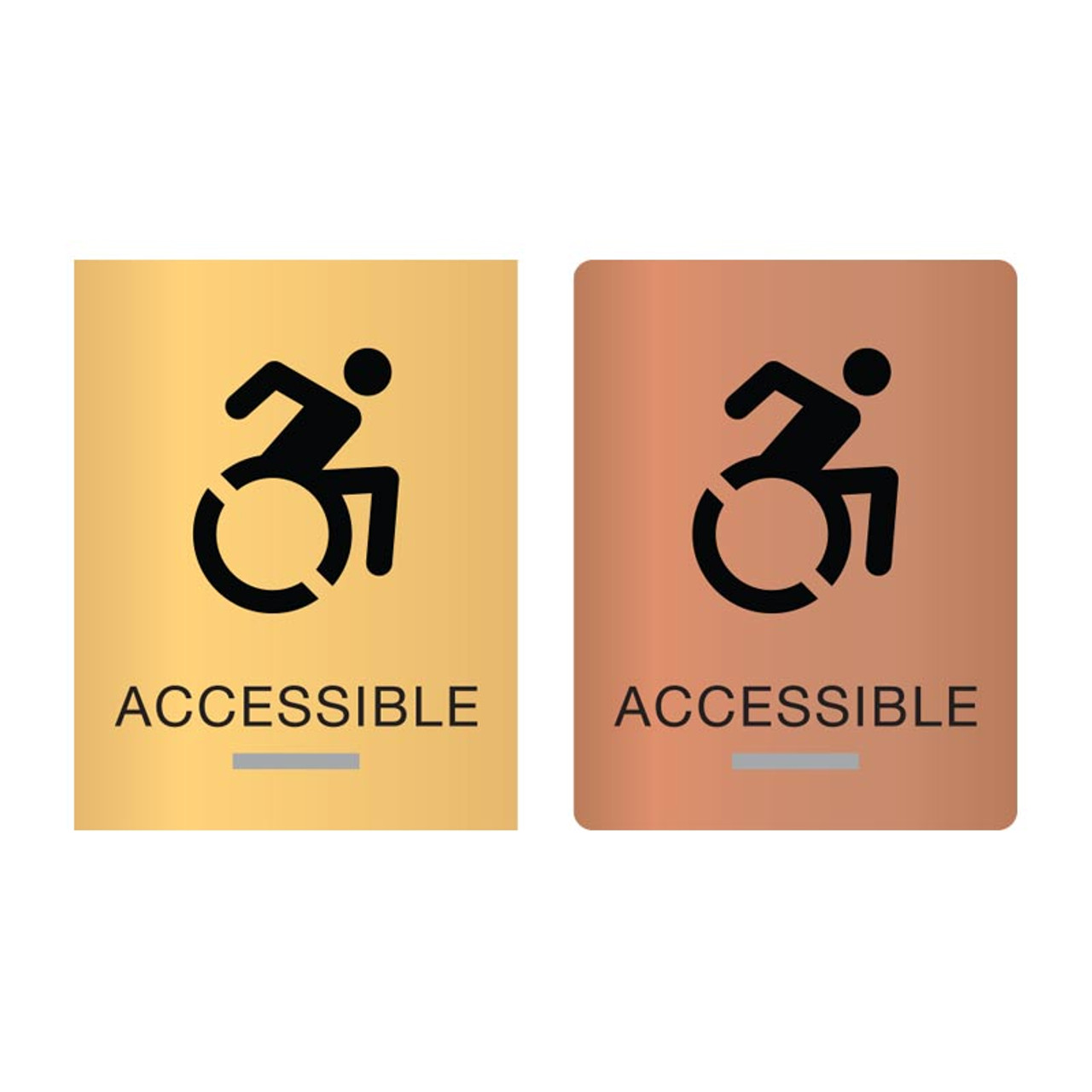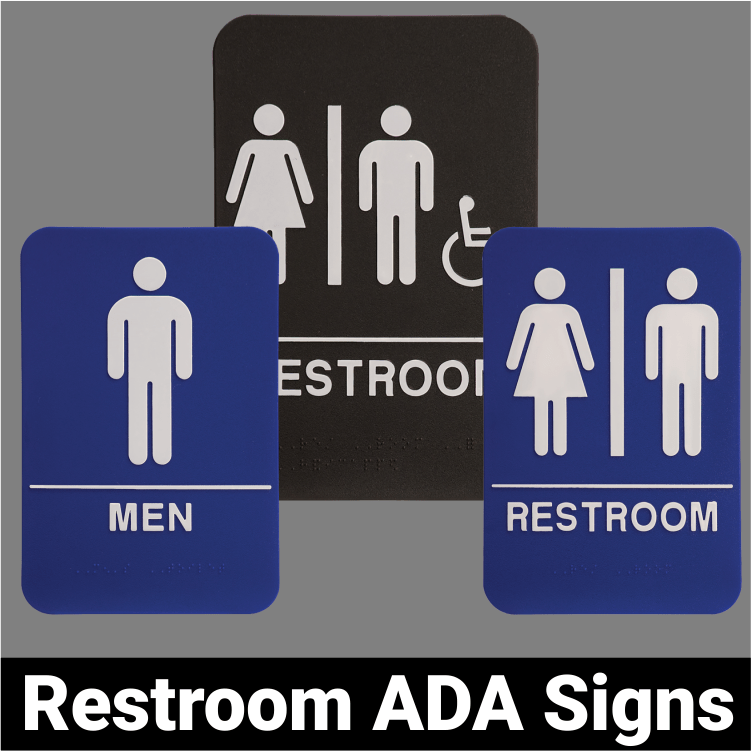ADA Signs: Crucial Tools for Inclusive Settings
ADA Signs: Crucial Tools for Inclusive Settings
Blog Article
Understanding the Importance of ADA Signs for Inclusive Settings
In a progressively diverse culture, the significance of ADA signage can not be overemphasized. By integrating attributes like tactile characters and high-contrast visuals, ADA signage plays a critical function in ensuring equal accessibility for people with specials needs.
The Role of ADA Signs
ADA signs plays an important function in making certain ease of access and inclusivity in public and personal rooms. These indicators are essential in guiding people with disabilities, offering them with the required details to browse settings independently and safely. The Americans with Disabilities Act (ADA) establishes forth certain guidelines for signage to ensure that people with aesthetic, auditory, or cognitive disabilities can access the exact same information as those without such obstacles.
The role of ADA signage prolongs past simple conformity with legal needs; it embodies a commitment to equality and non-discrimination. By executing ADA-compliant indicators, establishments and organizations show their devotion to developing environments where every person, regardless of their physical capabilities, can participate completely and just as. This is especially critical in spaces like health centers, schools, and government buildings, where availability can directly impact an individual's wellness and ability to accessibility vital solutions.
Moreover, ADA signs adds to the general customer experience by decreasing confusion and improving wayfinding for all people. Clear, purposefully put signage aids in managing foot website traffic, reducing congestion, and enhancing safety and security. In significance, ADA signage is a keystone of inclusive layout, facilitating a setting where all individuals can engage and browse with their environments efficiently.
Trick Parts of ADA Signs
Reliable interaction goes to the heart of ADA signs, which integrates a number of vital components to guarantee availability for people with disabilities. Among the primary components is using tactile personalities, such as Braille and elevated letters, which allow people with aesthetic problems to check out the signs via touch. The Braille must be Grade 2 and positioned directly listed below the equivalent message.

Another essential component is the placing area and height of the indications. ADA guidelines specify that indications should be installed at a height that is accessible to all individuals, commonly in between 48 and 60 inches from the flooring. This guarantees that they are within reach for people in mobility devices or of varying elevations.
Advantages for Individuals and Organizations
While ensuring availability with ADA signage is a legal requirement, it likewise uses substantial advantages for both people and organizations. For individuals, specifically those with disabilities, ADA signage supplies crucial access to public spaces.
For companies, the application of ADA signage can bring about enhanced client fulfillment and commitment. By demonstrating a dedication to accessibility, businesses can attract a more comprehensive customer base, including people with disabilities and their households, who typically look for inclusive atmospheres. Additionally, ADA compliance can secure services from possible lawful challenges and penalties connected with non-compliance, safeguarding their track record and economic stability.
In addition, ADA signs can contribute to a positive office atmosphere. Workers with specials needs benefit from obtainable navigation within their work spaces, advertising productivity and spirits (ADA Signs). Inevitably, spending in ADA signage not only satisfies lawful commitments yet also enhances the inclusivity, online reputation, and functional success of organizations
Common Kinds of ADA Signs
When discussing the different types of ADA signs, it is essential to understand the details kinds that cater to various More Bonuses availability requirements. ADA signs is designed to ensure that people with specials needs can browse rooms safely and independently.
An additional substantial type of ADA signs is directional indications. These offer clear support to numerous places within a center, making sure that all individuals, including those with mobility impairments, can easily discover their way - ADA Signs. They frequently integrate icons and high-contrast shades to boost visibility and understanding
Informational signs are also vital, offering essential details regarding centers, such as operating hours and plan standards. In enhancement, governing signs convey necessary instructions, like "No Smoking cigarettes" or "Departure Path," making sure compliance with safety protocols.
Lastly, recognition signs are made use of to identify spaces and areas, making it much easier for every person, no matter capability, to identify details locations. These signs commonly consist of pictograms to improve universal understanding. Jointly, these typical types of ADA signs play an essential role in producing accessible and inclusive environments.

Implementing Effective Signage Solutions
Implementing effective signage options requires a tactical technique to ensure availability and conformity with the ADA criteria. The process begins with a comprehensive analysis of the center to determine the specific signs needs based upon the setting's function, layout, and the populace it serves. This analysis needs to consist of factors to consider for both short-lived and irreversible signs, each requiring distinctive design and placement strategies.
The option of products and style elements is vital. Signage ought to be made from long lasting materials to withstand ecological elements while ensuring high exposure and clarity. Key features such as contrasting shades, tactile aspects, and non-glare finishes are necessary to you could check here accommodate people with visual problems. In addition, the integration of Braille and elevated characters must follow ADA specifications visit here to offer equal accessibility.
Regular testimonial and upkeep of signage ensure continued compliance and effectiveness. Involving with access specialists during the preparation and implementation phases can provide useful insights, making sure that signage not only meets lawful demands however also enhances the inclusivity of the atmosphere.

Conclusion
ADA signs plays a crucial duty in creating comprehensive settings by guaranteeing compliance with accessibility standards and boosting navigation for all individuals. By cultivating safer and a lot more inviting spaces, ADA signage highlights a dedication to inclusivity, eventually contributing to a much more fair culture for everyone.
By integrating features like high-contrast visuals and tactile characters, ADA signs plays a critical function in making sure equivalent gain access to for people with impairments. The Americans with Disabilities Act (ADA) establishes forth specific guidelines for signage to make sure that individuals with visual, acoustic, or cognitive disabilities can access the same details as those without such difficulties.
Efficient communication is at the heart of ADA signage, which integrates a number of essential components to make certain accessibility for people with disabilities.While ensuring accessibility with ADA signage is a legal demand, it additionally offers significant advantages for both individuals and companies. ADA signage is made to guarantee that people with specials needs can browse rooms securely and independently.
Report this page